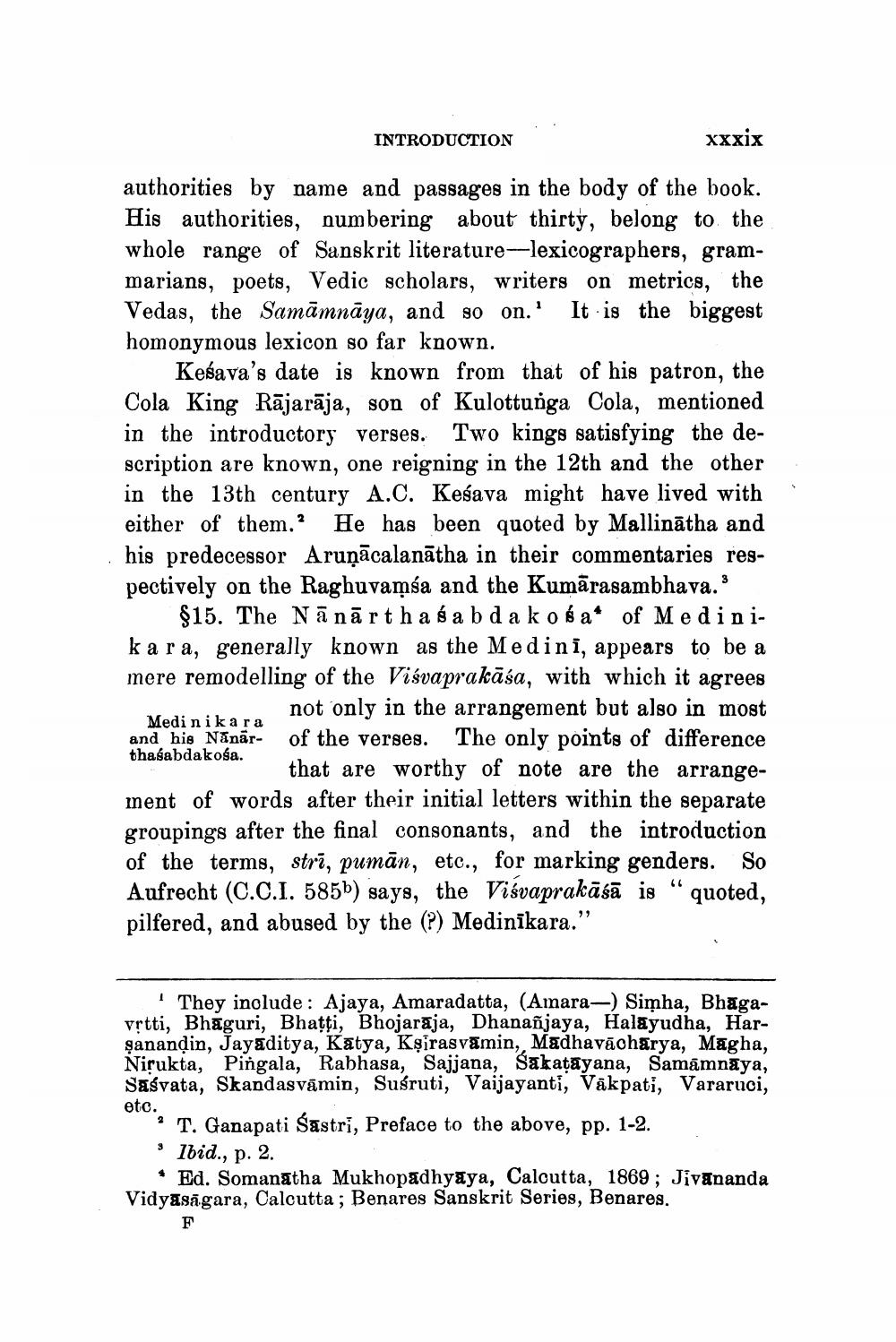________________
xxxix
authorities by name and passages in the body of the book. His authorities, numbering about thirty, belong to the whole range of Sanskrit literature-lexicographers, grammarians, poets, Vedic scholars, writers on metrics, the Vedas, the Samamnaya, and so on.' It is the biggest homonymous lexicon so far known.
Kesava's date is known from that of his patron, the Cola King Rajaraja, son of Kulottunga Cola, mentioned in the introductory verses. Two kings satisfying the description are known, one reigning in the 12th and the other in the 13th century A.C. Kesava might have lived with either of them.2 He has been quoted by Mallinatha and his predecessor Aruņācalanatha in their commentaries respectively on the Raghuvamsa and the Kumarasambhava."
$15. The Nanartha sabda kosa* of Medinikara, generally known as the Medini, appears to be a mere remodelling of the Viśvaprakasa, with which it agrees not only in the arrangement but also in most of the verses. The only points of difference that are worthy of note are the arrangement of words after their initial letters within the separate groupings after the final consonants, and the introduction of the terms, strī, pumān, etc., for marking genders. So Aufrecht (C.C.I. 585b) says, the Viśvaprakāśā is quoted, pilfered, and abused by the (?) Medinikara."
"L
Medi nikara and his Nanarthaśabdakosa.
1
INTRODUCTION
They include: Ajaya, Amaradatta, (Amara-) Simha, Bhagavṛtti, Bhaguri, Bhatti, Bhojaraja, Dhananjaya, Halayudha, Harşananḍin, Jayaditya, Katya, Kṣirasvamin,, Madhavacharya, Magha, Nirukta, Pingala, Rabhasa, Sajjana, Sakaṭayana, Samamnaya, Sasvata, Skandasvamin, Suśruti, Vaijayanti, Vakpati, Vararuci,
etc.
2 T. Ganapati Sastri, Preface to the above, pp. 1-2.
3
Ibid., p. 2.
Ed. Somanatha Mukhopadhyaya, Calcutta, 1869; Jivananda Vidyasagara, Calcutta ; Benares Sanskrit Series, Benares.
F




